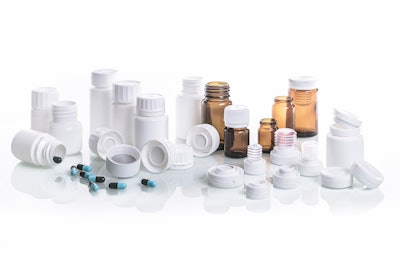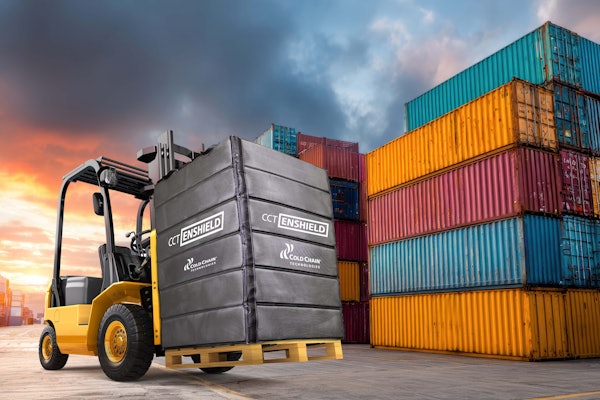
Good plastic packaging for pharmaceutical and healthcare products must fulfill many requirements.
It needs to protect the product from exterior influences and inform users about the content, while conveying marketing messages and boosting sales. At the same time, it must ensure that the content is easy to remove and that the package can be reclosed and reopened effortlessly. Child safety is another important prerequisite. Every package should be designed to protect children from unintentional ingestion of medication. Regulatory bodies have issued guidelines, and industry undertakes measures to conform to regulations and make their packaging safer for children.
Packaging as safety hazard
Children often show unexpected skills when they want to access the content of pharmaceutical packaging. Some exterior package designs suggest they might contain sweets of some sort. Some tablets and pills actually do taste rather sweet due to their sugar coating. However, curiosity can have dramatic consequences. Toddlers are especially vulnerable, as they discover their environment through touching, sucking and chewing. Children between just below 1 and approximately 4 ½ years of age tend to put objects in their mouths or even swallow them.
Child-resistant (CR) packaging can help prevent unintended child poisoning. To open such a package, for instance a plastic tube or other container, you need to know a certain “trick.” This trick is often too difficult for infants to learn. A 3-year-old will most likely not find out how to open a package that requires simultaneous tipping of a closure while it is pushed open. At the same time, access to medication must still be granted for patients depending on their regular dose. For this reason, CR packaging should also be senior-friendly in terms of opening and handling, according to the motto “as easy as possible, as difficult as needed.”
Differing regulations
CR packaging is subject to national and international regulations, however not on a uniform basis. This is especially true for pharmaceutical products. Here, the U.S. takes a leading role. As far back as 1970, the “Poison Prevention Packaging Act“ (PPPA) took on this topic due to the rising number of poisoning through toxic chemicals used in households. The regulation US 16 CFR § 1700.20 defines consistent rules for dangerous chemical—technical and pharmaceutical products. Apart from few exceptions, all prescription drugs must be packaged in a child-resistant manner. The regulation determines which requirements are valid for CR packaging and which tests need to be carried out.
The Indian standard determined in 1995 defines CR packaging as “any packaging which is difficult for young children under the age of 5 to open (or gain access to the contents), but which is not difficult for adults.” Here, too, the philosophy “as easy as possible, as difficult as needed” is applied. The aim of this standard is to “form a practical basis for the development of packages with acceptable child-resistant features and to offer advice to manufacturers when selecting unit-dose packaging with a view to child safety.”
Small modification, large effect
CR packaging can save lives, which is why many drug producers are not waiting for continent-wide or even worldwide regulations. Instead, they sought appropriate packaging years ago.
So, what is most important when choosing the ideal plastic packaging? It should be cost-efficient, user-friendly and child-resistant. To fulfil all three criteria, pharmaceutical and healthcare companies can cooperate with a supplier experienced in packaging engineering that can optimize a packaging concept in line with regulatory requirements with only a small modification.
Two aspects should be taken into account—force-related safety and the cognitive component. A learning effect is required when a closure can only be opened through a certain sequence of movements. The force needed to open a package is just as important. Apart from the push/turn version commonly used for large tablet containers in North America, there are numerous options to make primary plastic packaging child-resistant through a combination of movements. When pushing and tipping, for instance, not much strength is required. This, in turn, makes the packaging suitable for grown-up users, especially senior citizens.
Two pressure points are incorporated into the closure enable grownups to easily open this self-explanatory packaging. Children, however, find it difficult, especially due to the fact that the push movement is followed by a tipping movement. A clear upper and lower limit for the applicable force should be defined at an early development stage. This way, relatively simple changes to a packaging such as the aforementioned pressure points can ensure additional safety. Over the years, many plastic packaging options have been developed and introduced that demonstrate the importance of CR packaging and prove that safety and user-friendliness can be combined without much effort.
Editor’s note: This story is authored by Ursula Hahn, Head of Product Management, Sanner Group
More information on child-resistant packaging can be found at the links below:
• Consumer Healthcare Products Assn.
• Guide to CR and SF Packages, U.S. Consumer Product Safety Commission
• Child-resistant packaging applications (click the hyperlinks within this list to navigate to each specific story)





















